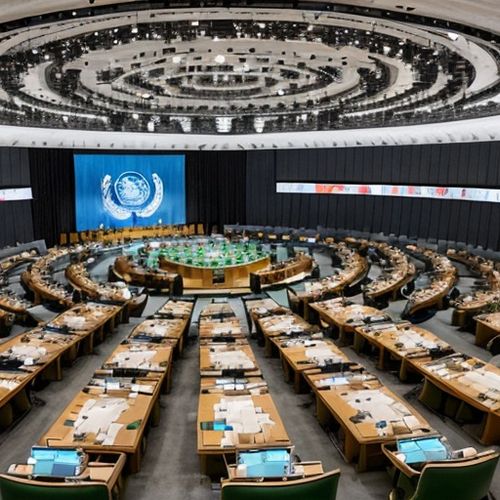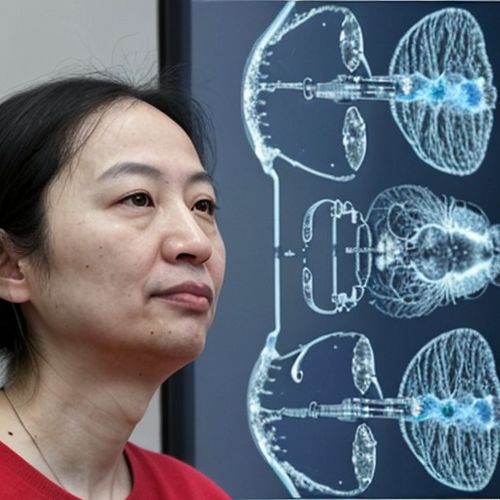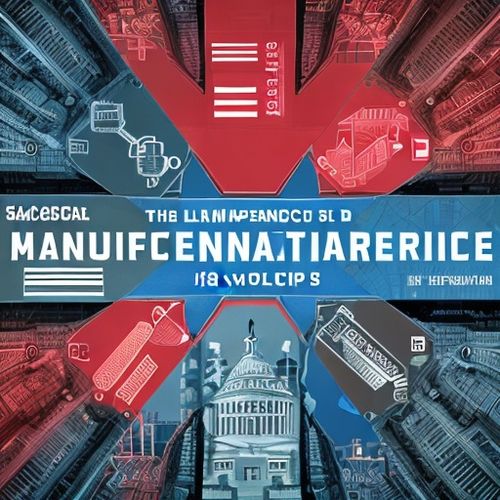The landmark CHIPS and Science Act of 2022 represents America's most ambitious industrial policy intervention in decades, with its $50 billion semiconductor manufacturing subsidy program at the heart of Washington's strategy to regain global technological leadership. As the Department of Commerce begins disbursing these critical funds, the allocation mechanisms reveal both strategic priorities and political compromises shaping the future of U.S. advanced manufacturing.
At its core, the subsidy distribution follows a three-tiered approach designed to address immediate supply chain vulnerabilities while building long-term research and production capacity. Approximately $39 billion goes directly to semiconductor fabrication facilities through the CHIPS for America Fund, with another $11 billion earmarked for research and workforce development initiatives. This bifurcation reflects the legislation's dual mandate - reshoring production while future-proofing American innovation ecosystems.
The geographical distribution of funds has already sparked intense competition among states, with the Commerce Department prioritizing regional technology hubs that combine existing infrastructure with workforce potential. Early awards suggest a deliberate strategy to spread investments beyond traditional semiconductor clusters in California and Texas, with surprising allocations to Ohio, Arizona, and upstate New York. This spatial calculus aims to create multiple centers of excellence rather than concentrating all capacity in historical tech corridors.
Within the manufacturing allocations, the Biden administration has shown particular favor toward mature-node chips used in automotive and defense applications - a recognition of the supply chain crises that originally motivated the legislation. While cutting-edge logic chips attract headlines, nearly 30% of production subsidies target legacy semiconductors where U.S. dependence on Asian foundries created critical vulnerabilities during the pandemic. This pragmatic focus distinguishes the CHIPS disbursements from more vanity-driven industrial policies.
Corporate recipients must navigate strict guardrail provisions that condition subsidies on ten-year production commitments, prohibitions on Chinese expansion, and profit-sharing requirements for projects exceeding expected returns. These strings reflect political realities in a divided Congress, where Democratic concerns about corporate accountability met Republican demands for protectionist measures. The resulting framework creates unprecedented public oversight of private semiconductor operations.
Research allocations follow a different calculus, with the $11 billion National Semiconductor Technology Center serving as the program's intellectual hub. Unlike manufacturing grants awarded through competitive bidding, research funds flow through existing networks of national labs, university consortia, and private-sector partnerships. This bifurcated approach aims to prevent brain drain from academia while still commercializing breakthrough technologies.
Workforce development constitutes perhaps the most innovative - and uncertain - component of the subsidy architecture. Nearly $5 billion is dedicated to regional training partnerships that connect community colleges with chip manufacturers, attempting to solve the industry's acute labor shortages. Early programs in Oregon and Michigan suggest this may become the legislation's most enduring legacy, creating vocational pathways into advanced manufacturing regardless of four-year degree attainment.
The subsidy distribution timeline reveals strategic staging, with near-term awards targeting "shovel-ready" projects that can demonstrate production starts before 2025. This urgency reflects both political imperatives ahead of the 2024 election and genuine concerns about maintaining momentum against Asian competitors. Later-stage allocations will fund more ambitious R&D initiatives with longer gestation periods, creating a pipeline of continuous advancement.
International partnerships add another layer of complexity to the subsidy matrix. While the Act prohibits direct funding to foreign entities, the Commerce Department has carved out exceptions for allied nation collaborators through joint ventures with U.S. firms. This delicate balance aims to strengthen ties with partners like Japan and South Korea without appearing to offshore American taxpayer funds - a political tightrope that could determine the program's geopolitical impact.
As the first major awards are announced, patterns emerge in the types of projects receiving support. Brownfield expansions of existing facilities have secured nearly 40% of early manufacturing grants, suggesting regulators value proven operational capacity over greenfield gambles. This preference for certainty aligns with the program's risk-averse stewardship under Commerce Secretary Gina Raimondo, who faces intense scrutiny over every dollar spent.
The subsidy program's most controversial aspect may be its corporate welfare critiques, as megafirms like Intel and TSMC receive billions despite record profits. Administration officials counter that without these incentives, private capital would continue flowing to Asia, leaving the U.S. strategically exposed. This fundamental tension between free-market principles and national security imperatives underlies every allocation decision.
Looking ahead, the CHIPS subsidy distribution will likely evolve through three distinct phases: immediate capacity building (2023-2025), technology maturation (2026-2028), and eventual transition to self-sustaining ecosystems (2029 onward). This phased approach acknowledges that no amount of government funding can permanently substitute for competitive private-sector innovation, aiming instead to create the conditions for market-driven success.
What emerges from the $50 billion experiment will shape not just American semiconductor fortunes, but the broader landscape of 21st-century industrial policy. The careful - if sometimes messy - allocation decisions now being made in Washington conference rooms may well determine whether the U.S. reclaims technological sovereignty or learns painful lessons about the limits of government-directed capitalism.

By Emily Johnson/Apr 10, 2025

By John Smith/Apr 10, 2025

By Christopher Harris/Apr 10, 2025

By Noah Bell/Apr 10, 2025

By Rebecca Stewart/Apr 10, 2025

By Victoria Gonzalez/Apr 10, 2025

By Amanda Phillips/Apr 10, 2025

By Emma Thompson/Apr 10, 2025

By Lily Simpson/Apr 10, 2025

By Emma Thompson/Apr 10, 2025

By Sophia Lewis/Apr 10, 2025

By Rebecca Stewart/Apr 10, 2025

By Noah Bell/Apr 10, 2025

By Sophia Lewis/Apr 10, 2025

By Christopher Harris/Apr 10, 2025

By Eric Ward/Apr 10, 2025

By Daniel Scott/Apr 10, 2025